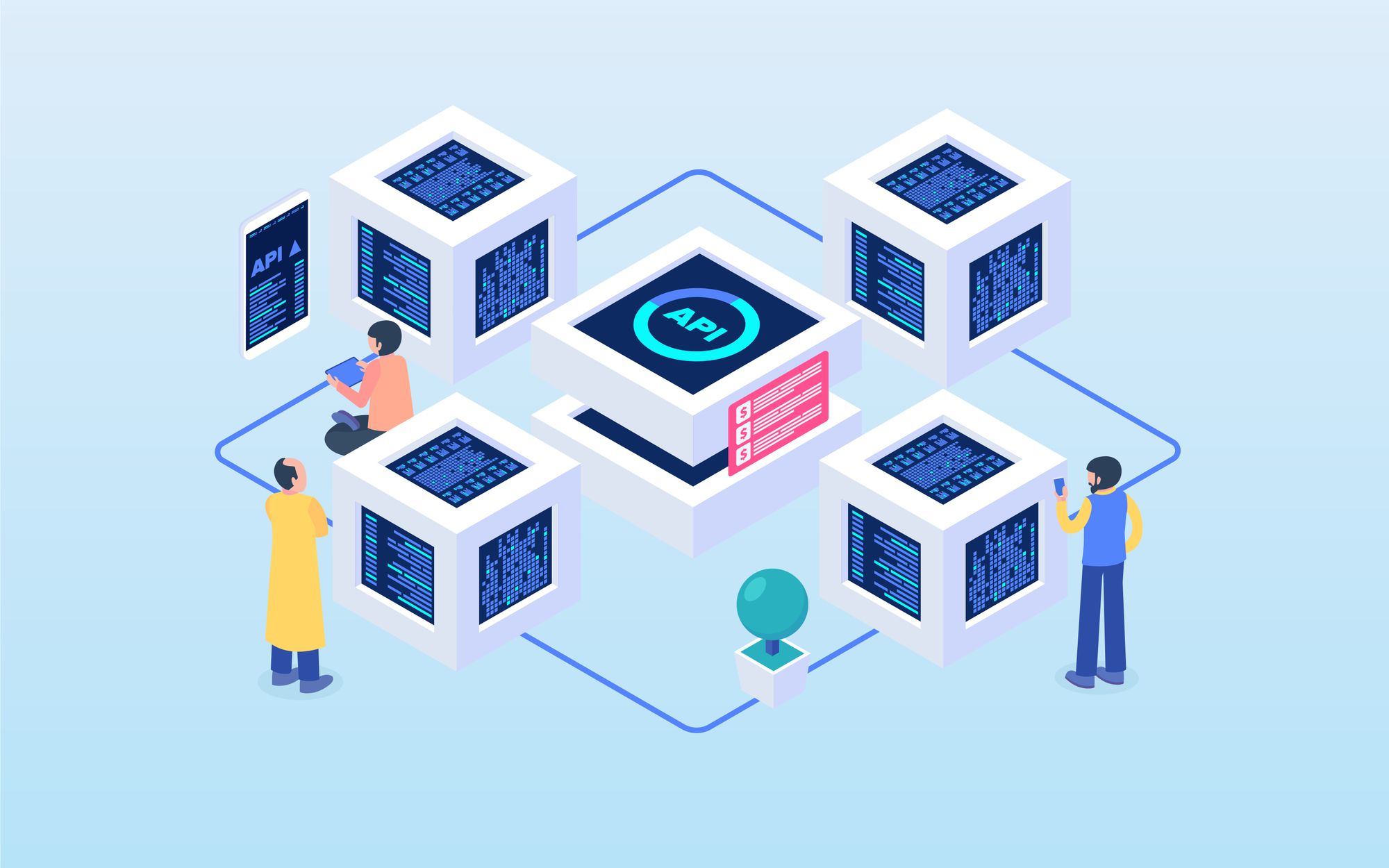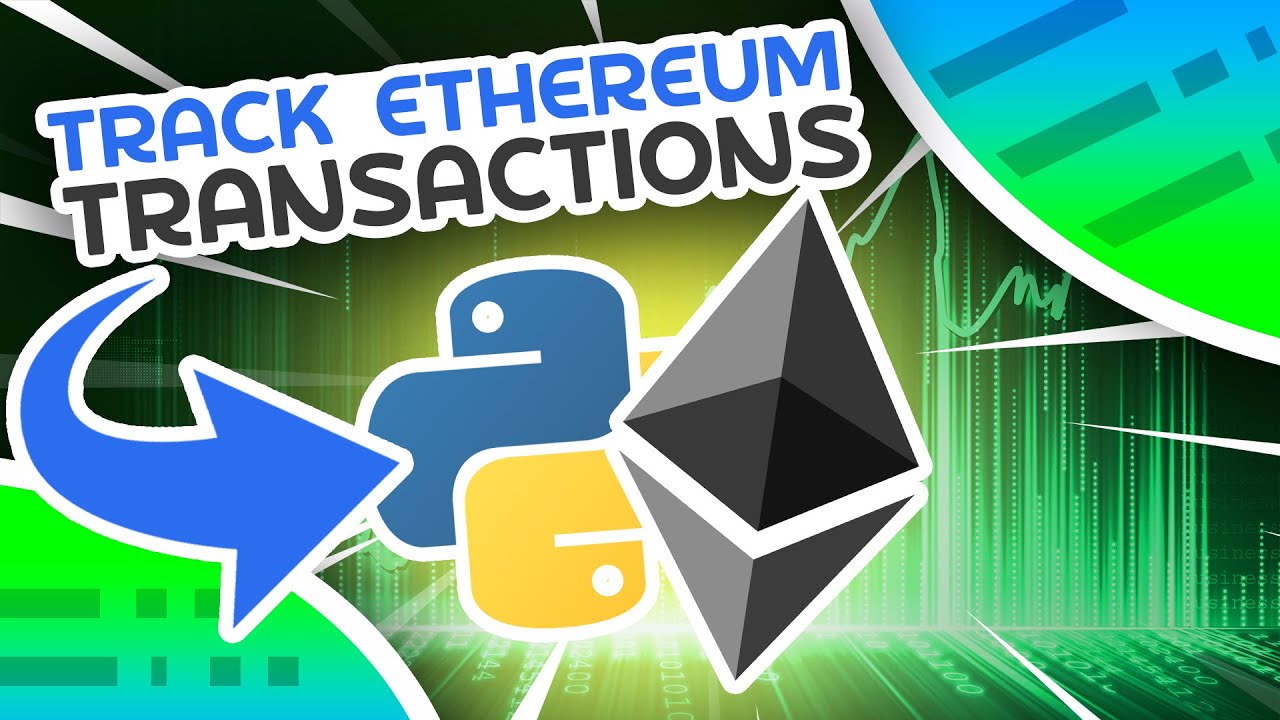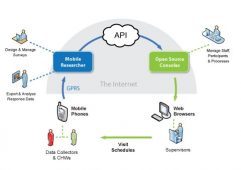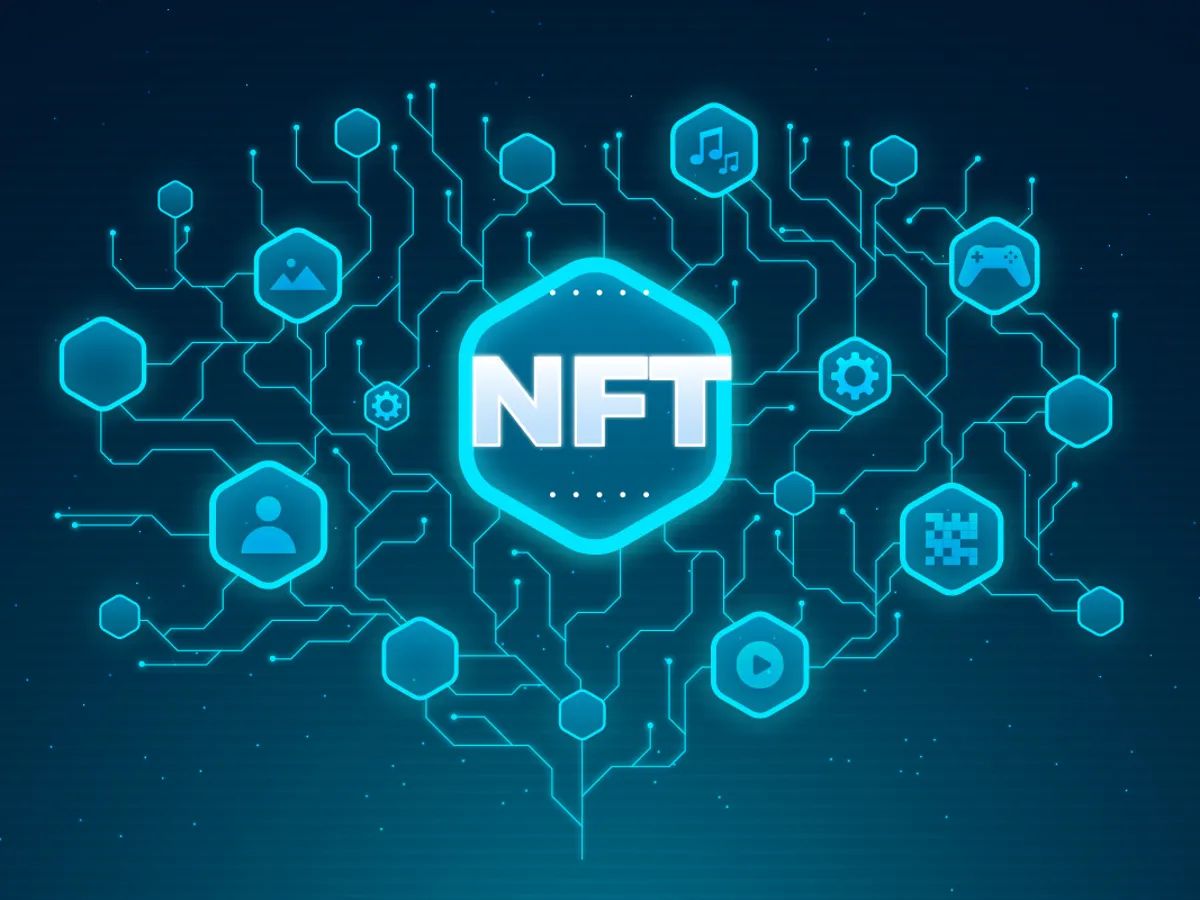Introduction
Blockchain technology has gained significant attention in recent years due to its ability to revolutionize various industries. From finance to supply chain management, blockchain offers transparency, security, and efficiency by creating a decentralized and immutable ledger. As businesses and developers seek to integrate blockchain into their systems, the need for seamless interaction between applications and the blockchain has led to the emergence of Blockchain APIs.
Blockchain APIs provide a bridge between traditional software applications and blockchain networks. They enable developers to access and interact with blockchain functionalities, such as creating and managing digital assets, executing smart contracts, and retrieving transaction information. Essentially, a Blockchain API acts as an interface that allows applications to communicate and exchange data with a blockchain network.
In this article, we will delve deeper into the concept of Blockchain APIs, exploring how they work, the types available, and the advantages and limitations of using them. Whether you are a developer looking to integrate blockchain technology into your application or a business seeking to streamline operations using blockchain, understanding Blockchain APIs is crucial.
What is Blockchain?
Blockchain is a decentralized and distributed digital ledger that records transactions across multiple computers, making it secure and transparent. Unlike traditional centralized databases, blockchain does not rely on a central authority or intermediary to validate transactions. Instead, it uses a consensus algorithm to verify the validity of each transaction through a network of computers, known as nodes.
Each transaction on the blockchain is represented as a “block” containing a list of records, called “transactions.” These transactions are cryptographically linked to the previous block, forming a chain of blocks, hence the name “blockchain.” Once recorded, the information stored on the blockchain is permanent and cannot be altered, providing a high level of integrity and immutability.
One of the key features of blockchain technology is its transparency. Anyone with access to the blockchain can view all the transactions that have occurred, promoting accountability and reducing the risk of fraud. Furthermore, blockchain employs advanced cryptographic techniques to secure the data, ensuring that it is tamper-proof.
The potential applications of blockchain extend far beyond cryptocurrencies. Industries such as supply chain, healthcare, finance, real estate, and more are exploring ways to leverage blockchain to streamline processes, enhance security, and eliminate intermediaries. By removing the need for a central authority, blockchain enables peer-to-peer interactions, reduces costs, and increases efficiency.
What is an API?
An API, or Application Programming Interface, is a set of rules and protocols that allows different software applications to communicate and interact with each other. It defines the methods and data formats that applications can use to request and exchange information.
APIs act as intermediaries, enabling seamless integration between different software systems. They provide a standardized way for applications to access and interact with specific functionalities or data from other applications, services, or platforms.
In simpler terms, think of an API as a messenger that takes requests from one application and delivers them to another, allowing them to work together and share information. APIs specify how to structure the request, what data is required, and the expected format of the response.
APIs can be classified into different types based on their purpose. Some APIs are designed for internal use, providing communication between different components within an application or system. Others are exposed publicly to enable third-party developers to access and utilize specific functionalities or data of a platform or service.
APIs are commonly used in various industries and for various purposes. For example, social media platforms provide APIs that allow developers to integrate their applications with features like authentication, posting updates, retrieving user information, and more. Payment gateways provide APIs for processing transactions securely. Weather services, mapping services, and other web-based services also expose APIs for developers to access relevant data.
Overall, APIs play a crucial role in modern software development by enabling interoperability, promoting collaboration among different applications, and simplifying the process of building complex systems by leveraging existing functionalities and services.
What is a Blockchain API?
A Blockchain API is an interface that allows software applications to interact with a blockchain network. It enables developers to integrate blockchain functionalities into their applications without having to build the blockchain infrastructure from scratch. Through a well-defined set of methods and data formats, a Blockchain API provides a simplified way to access and utilize the capabilities of a blockchain network.
A Blockchain API acts as a bridge between traditional software applications and the underlying blockchain technology. It abstracts the complexities of interacting with the blockchain, making it easier for developers to incorporate blockchain functionalities into their applications.
With a Blockchain API, developers can perform various operations on the blockchain network, such as creating and managing digital assets, querying transaction history, executing smart contracts, and more. The API handles the intricacies of constructing blockchain transactions, handling cryptographic operations, and communicating with the blockchain nodes.
Blockchain APIs are designed to be versatile and flexible, allowing developers to tailor their applications to specific use cases. They provide a wide range of functionalities and options, empowering developers to build applications that leverage the unique features and benefits of blockchain technology.
Furthermore, a Blockchain API can support multiple blockchain networks, accommodating different protocols and consensus algorithms. This versatility enables developers to work with different blockchains based on their specific requirements or preferences.
Overall, a Blockchain API simplifies the process of integrating blockchain technology into applications, enabling developers to harness the transformative power of blockchain without extensive knowledge of the underlying technology. It provides a standardized and streamlined approach for applications to communicate and interact with blockchain networks, unlocking new possibilities in a wide range of industries.
How does a Blockchain API work?
A Blockchain API acts as a middle layer that facilitates communication between applications and a blockchain network. It abstracts the complexities of interacting with the blockchain, providing a simplified interface for developers to work with. Here’s an overview of how a Blockchain API typically works:
- Authentication: The API requires authentication to ensure that only authorized applications have access to the blockchain network. This may involve generating API keys, tokens, or other forms of secure authentication.
- Request Formatting: Developers construct requests to interact with the blockchain network using the API. These requests may include actions such as creating transactions, querying transaction information, or executing smart contracts. The API provides a well-defined format for structuring these requests.
- Communication: Once the request is formatted, the API communicates with the blockchain nodes. It relays the request to the appropriate node responsible for processing the specific operation. The API handles the transmission of the request and any necessary data encryption.
- Transaction Processing: The blockchain node receives the request and processes it according to the protocol of the blockchain network. This may involve validating the transaction, verifying digital signatures, and executing the necessary operations on the blockchain.
- Response Handling: After processing the requested operation, the blockchain node generates a response. The API collects the response and formats it into a standard format, such as JSON or XML, for easy consumption by the requesting application.
- Return & Error Handling: The API sends the formatted response back to the requesting application. If the operation was successful, the API returns the desired data or confirmation. In case of errors or exceptions, the API provides appropriate error messages or status codes for the application to handle.
The entire process is typically conducted over secure channels using encryption to protect the integrity and confidentiality of the data being transmitted. The Blockchain API abstracts away the complexities of directly interacting with the lower-level blockchain network, simplifying the integration process for developers.
Different Blockchain APIs may have additional features and functionalities, such as caching data, providing webhooks for real-time notifications, or offering custom events and triggers. The specific implementation and capabilities of a Blockchain API may vary depending on the provider and the underlying blockchain network.
By leveraging a Blockchain API, developers can harness the power of blockchain technology in their applications without having to understand the intricacies of blockchain protocols or manage the underlying infrastructure. The API serves as a convenient and standardized interface, enabling seamless integration and unlocking the potential of blockchain technology for various use cases.
Types of Blockchain APIs
There are different types of Blockchain APIs available, each catering to specific needs and requirements. Here are some commonly used types of Blockchain APIs:
- Read APIs: Read APIs allow developers to retrieve data from the blockchain. These APIs provide methods to query transaction history, retrieve account balances, fetch transaction details, and access other information stored on the blockchain.
- Write APIs: Write APIs enable developers to submit transactions to the blockchain network. Developers can use these APIs to create and broadcast new transactions, update existing records, and interact with smart contracts. Write APIs typically require authentication and may involve digital signature generation.
- Payment APIs: Payment APIs are specifically designed to handle cryptocurrency transactions. These APIs provide methods for creating and processing payments, checking account balances, and handling wallet management. Payment APIs often support multiple cryptocurrencies and integrate with popular payment gateways.
- Smart Contract APIs: Smart Contract APIs allow developers to interact with and execute smart contracts deployed on the blockchain. These APIs provide methods for invoking smart contract functions, querying contract state, and monitoring contract events. Developers can integrate smart contract functionality into their applications seamlessly.
- Token APIs: Token APIs are used to create, manage, and manipulate digital tokens on the blockchain. These APIs provide methods for creating new token types, issuing tokens, transferring ownership, and querying token balances and metadata.
- Chain Interoperability APIs: Chain Interoperability APIs facilitate communication and interaction between different blockchain networks. These APIs enable developers to transfer assets or data between different blockchains, providing interoperability across diverse blockchain ecosystems.
The availability of these types of Blockchain APIs may vary based on the blockchain network being used and the chosen API provider. Some API providers offer comprehensive solutions that encompass multiple types of APIs, while others specialize in specific API types for particular blockchain networks or use cases.
When choosing a Blockchain API, it is important to consider factors such as supported blockchain networks, compatibility with programming languages, scalability, security, and developer community support. Assessing the specific requirements of the project and the available features of the API will help in selecting the most suitable option.
By leveraging the appropriate types of Blockchain APIs, developers can unlock the full potential of blockchain technology by integrating it into their applications, enhancing functionality, and improving user experiences. Whether it is retrieving information, processing payments, executing smart contracts, or creating and managing tokens, Blockchain APIs offer a wide range of capabilities to meet diverse needs.
Popular Blockchain APIs
As blockchain technology continues to gain traction, several popular Blockchain APIs have emerged to facilitate seamless integration with blockchain networks. Here are some notable examples:
- Ethereum API: Ethereum, one of the most widely used blockchain platforms, offers its own API called Ethereum API or simply ETH API. It provides developers with a comprehensive set of methods to interact with the Ethereum network, including creating and managing smart contracts, querying blockchain data, and executing transactions.
- Bitcoin API: Bitcoin, the pioneering cryptocurrency, also provides its own API, known as Bitcoin API. This API allows developers to send and receive Bitcoin transactions, retrieve blockchain data, and query transaction details. The Bitcoin API provides access to the functionalities of the Bitcoin Core software, making it a popular choice for Bitcoin-related projects.
- Hyperledger Fabric API: Hyperledger Fabric is a private blockchain framework developed by the Linux Foundation. It provides its own APIs for developers to interact with the Hyperledger Fabric network. The Fabric API enables the creation and management of smart contracts, as well as the execution of transactions within a private, permissioned blockchain network.
- Stellar API: Stellar is an open-source blockchain platform designed for fast and low-cost cross-border transactions. The Stellar API enables developers to build applications that can issue and transfer assets, make payments, and access transaction details within the Stellar network. It provides a user-friendly interface and supports various programming languages.
- EOS API: EOS is a blockchain platform that aims to provide high scalability and user-friendly development of decentralized applications (DApps). The EOS API allows developers to interact with the EOS network, including creating accounts, executing smart contracts, and querying blockchain data. It offers robust support for building DApps on the EOS platform.
- Ripple API: Ripple is a blockchain-based payment protocol that enables fast and low-cost global transactions. The Ripple API, also known as XRPL API, provides developers with methods to send payments, retrieve transaction details, and access various other features of the Ripple network. It offers excellent integration capabilities for financial applications.
These are just a few examples of popular Blockchain APIs. There are numerous other APIs available for various blockchain platforms, including those specific to industry-focused blockchains or enterprise blockchain solutions. Developers can choose an API that aligns with their desired blockchain network, programming language, desired functionalities, and project requirements.
When selecting a Blockchain API, it is important to consider factors like documentation, available SDKs, community support, pricing, performance, and security features. Evaluating these aspects will help developers choose an API that best fits their needs and supports the successful implementation of their blockchain-based applications.
By utilizing popular Blockchain APIs, developers can leverage the power of established blockchain platforms and integrate blockchain functionalities into their applications with ease, allowing for enhanced functionality, interoperability, and seamless integration with existing systems.
Advantages of using Blockchain APIs
Integrating Blockchain APIs into applications offers several advantages, enabling developers and businesses to leverage the benefits of blockchain technology. Here are some key advantages of using Blockchain APIs:
- Seamless Integration: Blockchain APIs provide a simplified and standardized way to integrate blockchain functionalities into applications. By offering a well-defined set of methods and data formats, these APIs abstract away the complex intricacies of blockchain technology, enabling developers to seamlessly interact with blockchain networks.
- Efficiency and Speed: Using Blockchain APIs eliminates the need to build and maintain a blockchain infrastructure from scratch. This saves time and resources, allowing developers to focus on building application-specific features and functionalities. Blockchain APIs also provide optimized communication protocols to interact with the blockchain, ensuring efficient and fast transaction processing.
- Enhanced Security: Blockchain technology inherently provides a high level of security through its decentralized and immutable nature. By utilizing Blockchain APIs, applications can leverage this security feature by securely interfacing with the blockchain network. The APIs handle authentication, data encryption, and transaction validation, ensuring the integrity and confidentiality of the data being transmitted.
- Transparency and Trust: Blockchain technology brings transparency to transactions by allowing participants to view and verify all recorded information on the blockchain. With Blockchain APIs, applications can access this transparent data in real-time, promoting trust and reducing the need for intermediaries to validate transactions. This transparency can enhance accountability and eliminate fraud possibilities.
- Cost Efficiency: Implementing Blockchain APIs eliminates the need for building an entire blockchain infrastructure, which can be costly and time-consuming. By leveraging existing blockchain networks and APIs, businesses can reduce infrastructure costs, operational expenses, and development efforts while still harnessing the benefits of blockchain technology.
- Interoperability: Blockchain APIs enable interoperability between different applications and blockchain networks. Developers can integrate multiple blockchains into their applications, allowing for seamless interaction and data exchange. This facilitates synergy between different blockchain ecosystems, providing opportunities for widespread adoption and collaboration.
These advantages make Blockchain APIs a valuable tool for developers and businesses seeking to leverage the transformative potential of blockchain technology. Whether it’s streamlining processes, enhancing security, reducing costs, or creating innovative applications, integrating Blockchain APIs offers a range of benefits that can drive growth and competitiveness in various industries.
Limitations of using Blockchain APIs
While Blockchain APIs offer numerous advantages, it is important to acknowledge their limitations as well. Here are some of the key limitations to consider when using Blockchain APIs:
- Performance: Blockchain networks, especially public ones, can experience scalability and performance issues due to the consensus mechanisms and decentralized nature. As a result, transaction processing speeds can be slower compared to traditional centralized systems. This can impact the responsiveness and real-time capabilities of applications using Blockchain APIs.
- Cost: Depending on the blockchain network and API provider, there may be associated costs in terms of transaction fees, API usage fees, or subscription charges. Heavy usage of APIs or high transaction volumes can lead to substantial costs, especially in public blockchain networks where transaction fees can fluctuate significantly.
- Learning Curve: Developing applications that integrate with blockchain networks requires a certain level of understanding about blockchain technology and the specific blockchain network being used. Developers may need to learn new programming languages, frameworks, and development paradigms. This learning curve can be steep, especially for developers who are new to blockchain technology.
- Immutability and Data Recovery: While the immutability of blockchain data is a desirable feature for security and auditability, it can present challenges when it comes to data recovery or making modifications to records. Once data is recorded on the blockchain, it becomes difficult to change or erase. Therefore, careful considerations need to be made when handling sensitive or potentially incorrect data using Blockchain APIs.
- Regulatory and Legal Compliance: Blockchain technology is still evolving, bringing challenges in terms of regulatory frameworks and legal compliance. Depending on the nature of the application and the geographic location of users, complying with data privacy laws, financial regulations, and other legal requirements can be complex when using Blockchain APIs.
- Dependency on Third-Party Providers: Integration with a specific Blockchain API means relying on a third-party provider. This dependency can introduce risks such as service disruptions, API changes, or potential data breaches. It is essential to carefully select reliable and trustworthy API providers and ensure contingency plans are in place to mitigate any potential issues.
Understanding the limitations of Blockchain APIs is crucial for developers and businesses to make informed decisions and address these challenges effectively. Strategically managing these limitations can help maximize the benefits of Blockchain APIs while mitigating potential risks or constraints.
Conclusion
Blockchain APIs have emerged as a powerful tool for integrating blockchain technology into applications seamlessly. They provide developers with a standardized and simplified interface to interact with blockchain networks, unlocking new possibilities and benefits.
The advantages of using Blockchain APIs are numerous. They enable seamless integration, enhance security, promote transparency and trust, and offer cost efficiency. By leveraging Blockchain APIs, developers can tap into the transformative power of blockchain technology without the need to build and manage complex infrastructure from scratch.
However, it is essential to be aware of the limitations as well. Performance issues, costs, learning curves, immutability challenges, regulatory compliance, and dependency on third-party providers are factors that need to be carefully considered and addressed when utilizing Blockchain APIs.
Despite these limitations, the continued development and improvement of Blockchain APIs hold significant promise for the future. As blockchain technology matures and becomes more widely adopted, the capabilities and functionalities of Blockchain APIs are likely to evolve, offering even more robust and versatile integration options.
In conclusion, Blockchain APIs provide a gateway to leverage the benefits of blockchain technology in various industries. By harnessing the advantages, understanding the limitations, and choosing the right Blockchain API provider, businesses and developers can embrace the potential of blockchain technology and drive innovation in a rapidly evolving digital landscape.

























